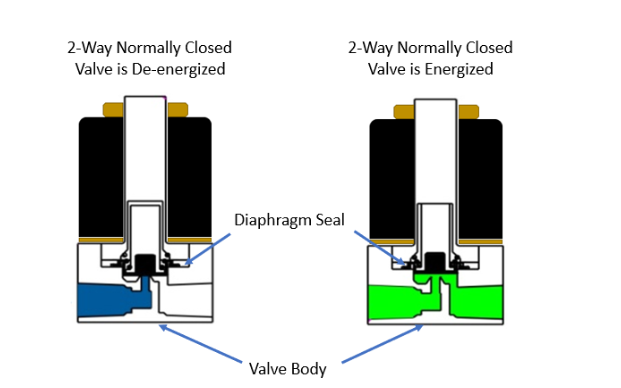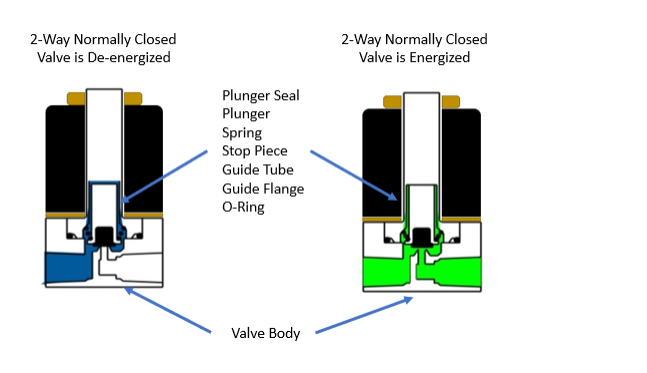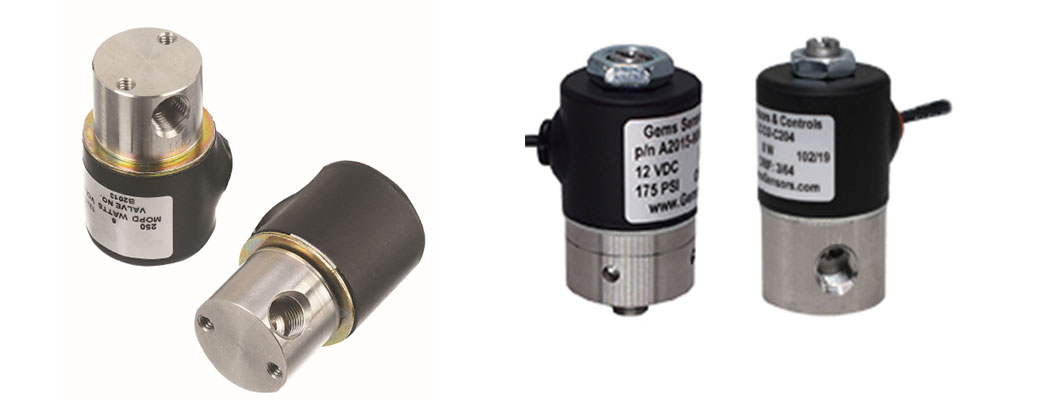Gems Sensors manufactures various types of solenoid valves, so it may get a little confusing on which valve is the best for your application. The term isolation valve may be subjective because almost every valve can be referred to as an isolation valve, because it will isolate a fluid from travelling through the valve. However, when Gems refers to an isolation valve, we are referring to the media being isolated from the inner components of the valve.
To understand this further, let’s look at the flow path of a general-purpose direct acting solenoid valve. As you can see below the fluid (liquid or gas) travels within the guide tube, so all those components are now wetted. That includes the plunger, plunger seal, guide tube, guide flange, spring, stop piece, O-ring, and body. That’s a lot of components that need to be considered for proper material compatibility!
However, on an isolation valve, the only components that come in contact with the fluid are the body and the diaphragm seal. From eight components down to only two.
Isolation Valve Wetted Components

As a comparison, you can see the flow path of a general-purpose solenoid valve includes those eight components mentioned above
General-Purpose Valve Wetted Components

 SEARCH OUR RESOURCE CENTER
SEARCH OUR RESOURCE CENTER

